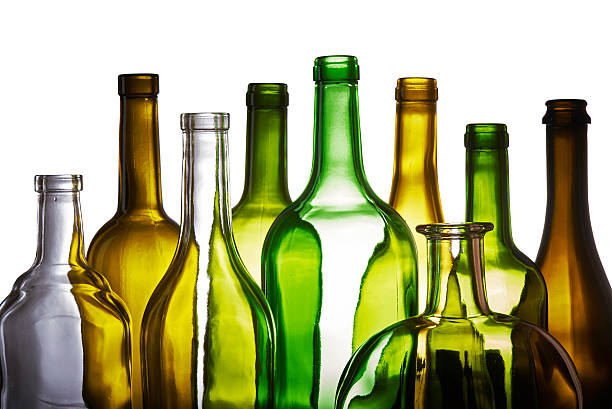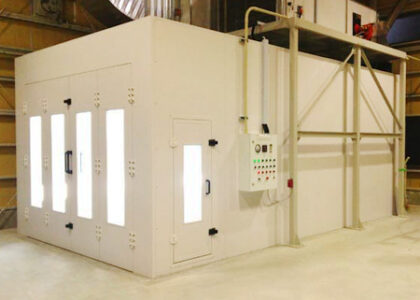Anticipated to witness substantial growth, the glass bottles market is poised to surge from US$ 40.2 billion in 2023 to a projected US$ 70.2 billion by 2033, reflecting a robust Compound Annual Growth Rate (CAGR) of 5.7% during the period spanning 2023 to 2033. This anticipated expansion underscores the escalating demand for glass packaging solutions, driven by factors such as sustainability, recyclability, and consumer preference for eco-friendly materials. The upward trajectory signals a promising outlook for the glass bottle industry, as it continues to play a pivotal role in various sectors, including beverages, pharmaceuticals, and cosmetics.
The market is increasingly recognizing glass as a highly sustainable and eco-friendly packaging solution, given its 100% recyclable nature, and this recognition is expected to fuel the demand for glass packaging throughout the projection period. The immediate benefits of glass recycling include the conservation of raw materials and a simultaneous reduction in the carbon footprint.
The glass bottle packaging is significantly safer as there are no risks of chemicals mixing into the product, with minimal risk to the consumer’s health. In addition, the taste of the food or beverage remains intact in the glass bottle packaging. Due to the pandemic, people are drawn to a healthier lifestyle. Besides healthy living, they are consciously making sustainable choices, especially about their day-to-day purchase.
With a market share exceeding 50%, the global glass bottles market is significantly shaped by the food and beverage industry, where beverages, including carbonated drinks, alcoholic beverages, and juices, stand out as key catalysts propelling growth and playing a pivotal role in revenue generation for the glass bottles sector.
Request Sample: https://www.futuremarketinsights.com/reports/sample/rep-gb-5122
Within the European glass bottle market, Germany commands a 25% market share, driven by its exemplary healthcare infrastructure and the prominence of leading pharmaceutical companies, contributing to the widespread use of glass bottles in pharmaceutical applications.
Simultaneously, France, with a market share exceeding 12% in the European glass bottles market, capitalizes on its robust fragrance and perfume industry. The global appeal of French perfumes significantly influences the growth of the overall glass bottle market. Data from the International Fragrance Association emphasizes the pivotal role of the French fragrance and perfume sector in propelling the expansion of the global glass bottle market in the years to come.
Glass bottles are environmentally friendly since they can be easily recycled and reused. These come in a variety of sizes, shapes, and qualities. Glass bottles are excellent packaging choices for water-based products or substances.
Glass bottles of various sizes, forms, and quality, for example, are used to hold chemicals in the chemical industry in a chemistry lab. Glass bottles are lightweight and portable, making them ideal for travel. Glass bottles are spill-proof packaging alternatives; however, they must be handled with caution due to their breakable nature.
Alternatives to plastic are in high demand due to escalating environmental safety concerns. As a result, the demand for glass bottles has skyrocketed. Increased spending on research and development capabilities, combined with collaborations by key players to explore untapped areas, is another factor influencing the growth of the glass bottles market.
End-user verticals such as the food and beverage industry and the pharmaceutical sector, as well as their expansion in developing areas, are driving the growth of the glass bottles market. Rising disposable income, rising demand for bottled beverages, and changing consumer lifestyles may all contribute to the glass bottle market’s growth rate.
The breakable nature of glass materials or bottles may stymie the expansion of the glass bottles market. The complexity of transportation as a result of this reason further slows the market’s growth pace. Other packaging solutions are expected to potentially pose a threat to the expansion of the glass bottle market.
Market Drivers:
- Sustainable Packaging Trends: Growing awareness and concern for environmental sustainability have led to increased demand for eco-friendly packaging solutions. Glass bottles, being recyclable and reusable, are favored by consumers and businesses looking to reduce their environmental impact.
- Health and Safety Concerns: Glass is considered a safe material for packaging food and beverages, as it doesn’t leach harmful chemicals. With a rising emphasis on health and safety, consumers may prefer products packaged in glass bottles, especially for beverages like juices and pharmaceutical products.
- Premium Packaging: Glass bottles are often associated with premium and high-quality products. The use of glass in packaging can enhance the perceived value of a product, attracting consumers who are willing to pay a premium for quality.
- Regulatory Support: Some regions may have regulations promoting the use of recyclable and sustainable packaging materials. Governments and environmental agencies encouraging the use of glass bottles can positively impact the market.
- Product Differentiation: Glass bottles provide opportunities for unique and creative designs, helping brands differentiate their products on the shelves. This can be a significant driver, especially in industries where branding and product presentation are crucial.
Market Restraints:
- Cost: Producing and transporting glass bottles can be more expensive compared to other packaging materials such as plastic. This cost factor can be a significant restraint, particularly for companies with tight budgets or those operating in price-sensitive markets.
- Weight and Fragility: Glass bottles are heavier and more fragile than alternatives like plastic. This can result in higher transportation costs and increased risk of breakage during handling and distribution.
- Limited Flexibility: Glass has limitations in terms of shape and flexibility compared to materials like plastic. This lack of flexibility may limit design options and could be a constraint for products that require unconventional packaging.
- Carbon Footprint: While glass is recyclable, the recycling process can be energy-intensive. Some argue that the overall carbon footprint of glass production and recycling may be higher than certain alternative materials.
- Perception of Bulkiness: Glass packaging, especially for beverages, can be perceived as bulky and less convenient for on-the-go consumption. This perception might affect consumer preferences, particularly in markets where convenience is a significant factor.
Request Customization: https://www.futuremarketinsights.com/customization-available/rep-gb-5122
Key Takeaways
- The glass bottles market is expected to register a CAGR of 5.7% during the forecast period 2023 to 2033.
- The global popularity of flavored beverages and alcoholic beverages is increasing.
- North America dominated the glass bottles market.
- China is ranked second in the regional glass bottle market.
The Key Players Are:
- Owen Illinois, Inc.
- Ardagh Group, SA
- Vitro, S. A. B. de C. V.
- Vidrala, S.A
- BA Glass B.V.
- AGI Glasspack Limited.
- Frigoglass Jebel Ali FZCO
- Consol Glass (Pty) Ltd.
- Toyo Glass Co., Ltd.
- Gerresheimer AG
- Vetropack Holding AG
- Borosil Glass Works Ltd.
- Carib Glassworks Limited (CGL)
- Piramal Glass Private Limited
- Albéa S.A.
- Verallia SA
Key Development
- In March 2021, the corporation launched its first blockchain-based cross-border commerce digitizing program. In 2021, the corporation has targeted digital automation to unleash latent profitability and efficiency. The company collaborated with the corporate blockchain platform DLT ledgers, a fintech organization based in Singapore and India.
- In September 2020, Owens-Illinois introduced an innovation called O-I: EXPRESSIONS, which uses digital printing to alter glass bottle design and allow customization and personalization by shaping glass bottles into multi-dimensional pieces of art.
- Piramal Glass Ltd (PGL) announced a US$ 42 million investment in its greenfield project in Jambusar, Gujarat, India, in February 2020. The proposed expansion includes a new furnace and seven more manufacturing lines spread throughout a 300,000-square-foot facility to primarily serve the high-end specialty spirit, food and beverage, and medicinal sectors for export to Asia, Europe, and the United States.
Buy Now/Purchase: https://www.futuremarketinsights.com/checkout/5122
The Key Segmentations-
By Grade:
- Type I
- Type II
- Type III
By Manufacturing Process:
- Blown
- Tubing
By Capacity:
- Up to 50 ml
- 51 – 200 ml
- 201 – 500 ml
- 501 – 1000 ml
- 1001 ml & Above
By End User:
- Food
- Beverages
- Pharmaceuticals
- Personal Care & Cosmetics
- Perfume & Fragrances
- Chemicals
- Others
By Region:
- North America
- Latin America
- Europe
- East Asia
- South Asia
- Oceania
- The Middle East and Africa (MEA)
About Future Market Insights (FMI)
Future Market Insights, Inc. (ESOMAR certified, recipient of the Stevie Award, and a member of the Greater New York Chamber of Commerce) offers profound insights into the driving factors that are boosting demand in the market. FMI stands as the leading global provider of market intelligence, advisory services, consulting, and events for the Packaging, Food and Beverage, Consumer, Technology, Healthcare, Industrial, and Chemicals markets. With a vast team of over 5000 analysts worldwide, FMI provides global, regional, and local expertise on diverse domains and industry trends across more than 110 countries.
Contact Us:
Future Market Insights Inc.
Christiana Corporate, 200 Continental Drive,
Suite 401, Newark, Delaware – 19713, USA
T: +1-845-579-5705
For Sales Enquiries: sales@futuremarketinsights.com
Website: https://www.futuremarketinsights.com
LinkedIn| Twitter| Blogs | YouTube


